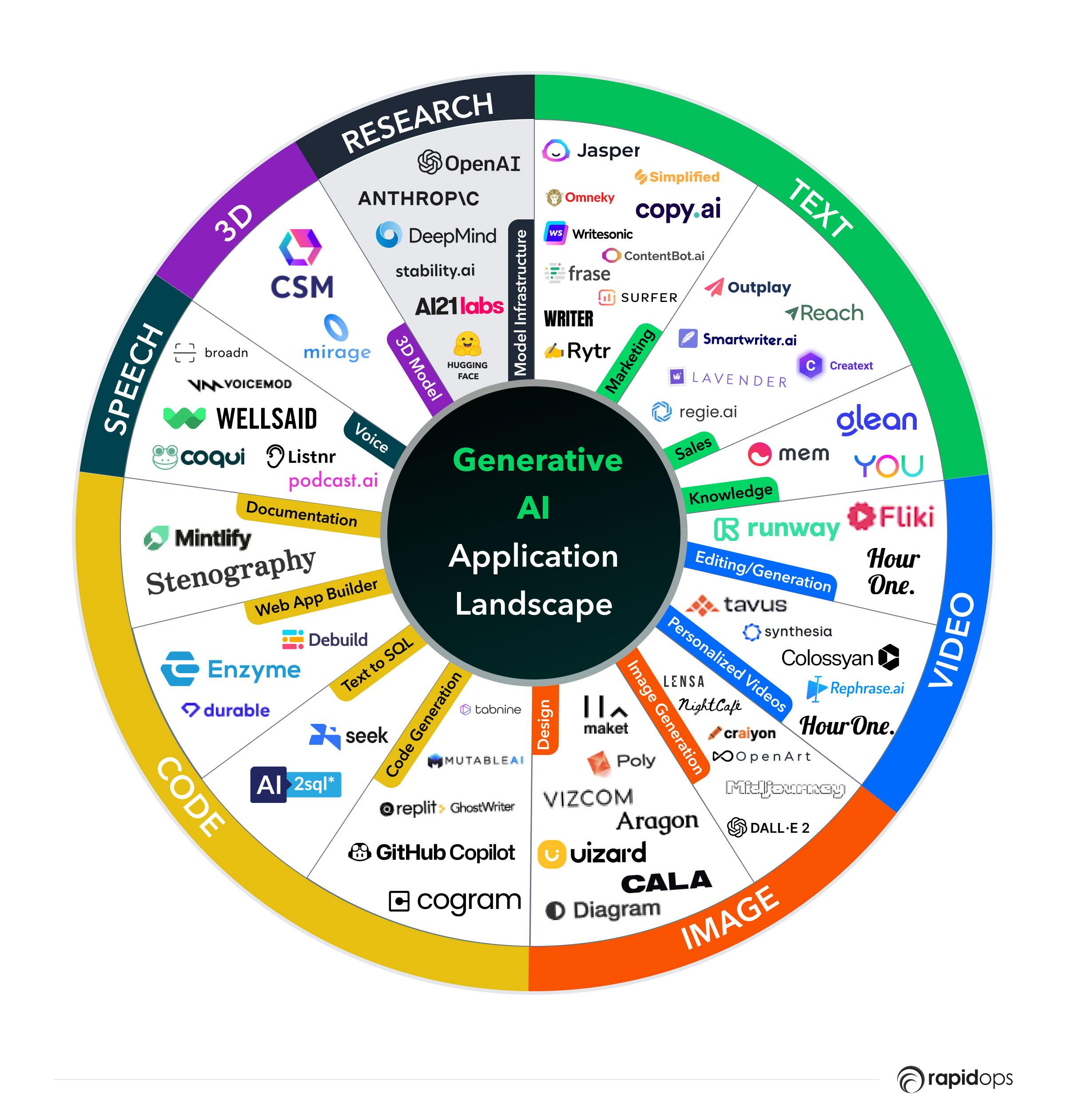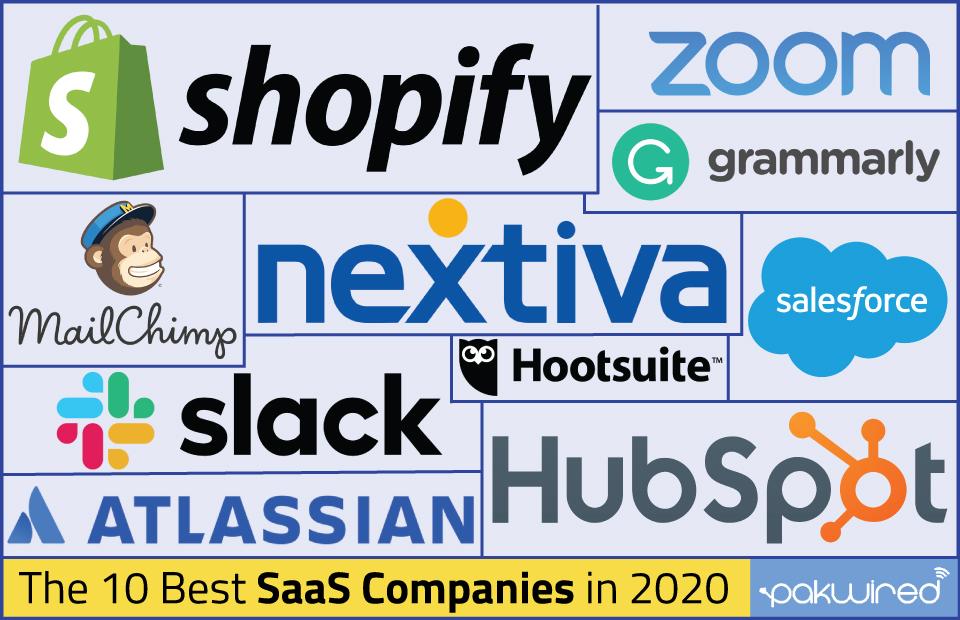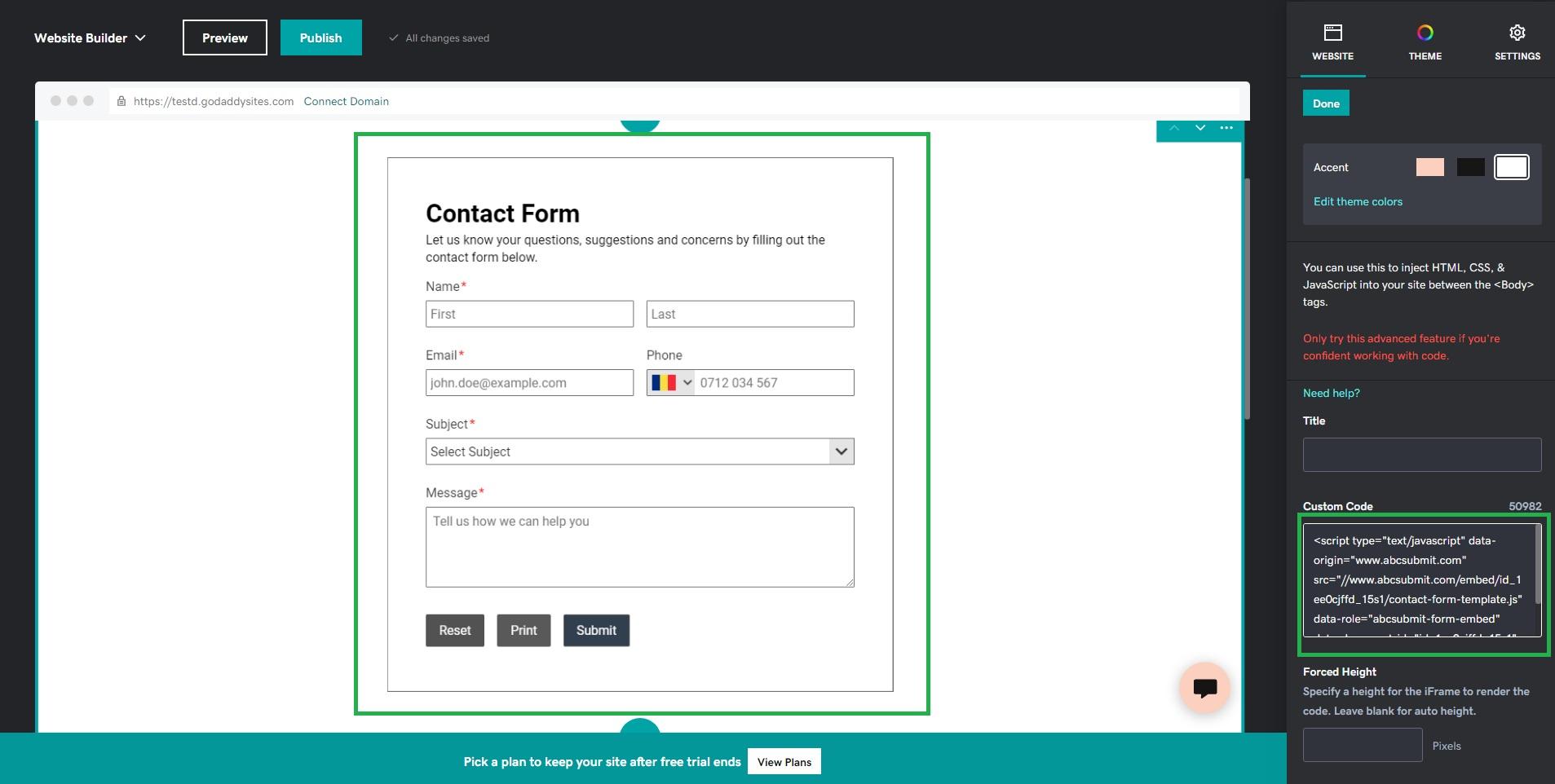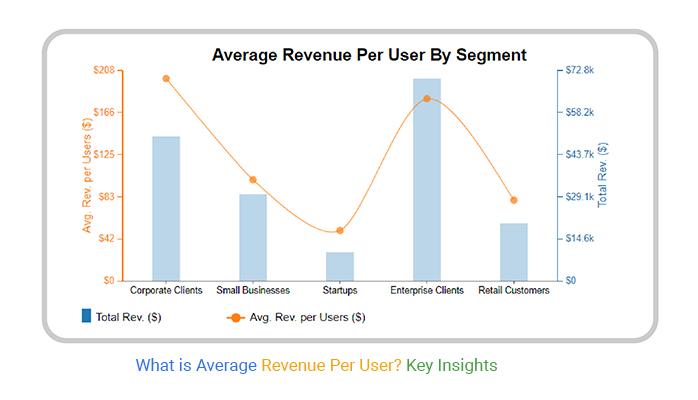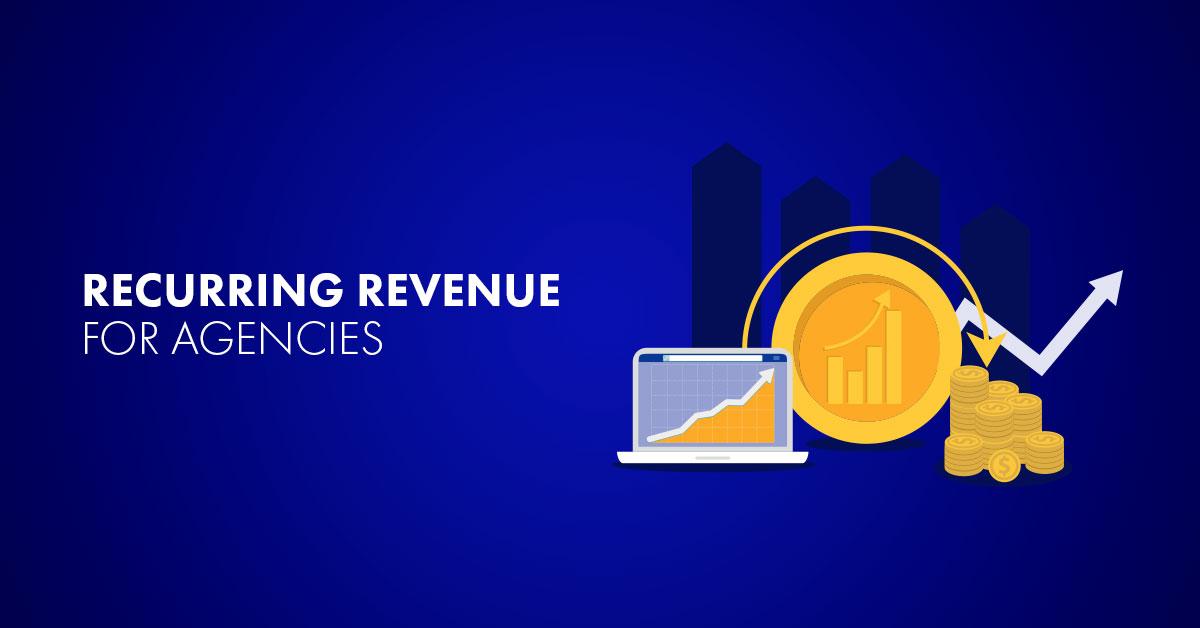
In today’s fast-paced digital landscape, agencies are constantly on the lookout for innovative ways to not just survive, but thrive. If you’re feeling the pressure to maintain cash flow while delivering outstanding services, you’re not alone. The secret might lie in boosting your recurring revenue. Imagine a steady stream of income that allows you to plan, grow, and invest in your business with confidence. Sounds appealing, right? In this article, we’ll explore six powerful tools designed to help you enhance your agency’s recurring revenue—and we won’t stop there! We’ll also dive into the smartest business models to pair with these tools, ensuring you maximize your potential and create a more stable financial future. Whether you’re a seasoned pro or just starting out, these insights will equip you to turn your agency into a revenue-generating powerhouse. Ready to unlock the door to sustainable growth? Let’s get started!
Understanding Recurring Revenue and Its Importance for Agencies
In the dynamic landscape of agency operations, understanding the concept of recurring revenue is crucial for sustainable growth. Recurring revenue refers to the predictable and consistent income generated from customers on a regular basis, often through subscription models or ongoing services. This model not only stabilizes cash flow but also enhances customer loyalty, making it a vital strategy for agencies looking to thrive in competitive markets.
One of the primary benefits of recurring revenue is its ability to create a reliable financial foundation. Instead of relying solely on one-time projects, agencies can forecast income more accurately, allowing for better budgeting and resource allocation. This financial predictability can help agencies invest in new tools, talent, and marketing strategies, ultimately fostering innovation and growth.
Additionally, recurring revenue models can significantly improve client relationships. By offering ongoing services, agencies can maintain continuous communication, ensuring that they remain top-of-mind for clients. This approach not only leads to higher customer retention rates but also opens up opportunities for upselling and cross-selling additional services. Clients are more likely to trust agencies that demonstrate consistent value over time, which can lead to long-term partnerships.
When it comes to implementing tools that facilitate recurring revenue, agencies have various options to choose from. Some popular tools include:
- Subscription Management Software: Helps agencies manage client subscriptions seamlessly.
- Billing and Invoicing Solutions: Automates billing processes, ensuring timely payments.
- Customer Relationship Management (CRM) Systems: Enhances client interactions and retention strategies.
- Marketing Automation Platforms: Streamlines marketing efforts, driving engagement and conversions.
Choosing the right model to use these tools is equally important. For example, agencies can adopt a tiered subscription model, where clients pay based on the level of service they require. This can cater to a variety of budgets and needs, making it accessible to a broader audience. Alternatively, a freemium model can attract new clients by offering basic services for free while charging for premium features.
To illustrate the potential impact of adopting recurring revenue strategies, consider the following table showcasing typical agency revenue streams and their benefits:
| Revenue Stream | Description | Key Benefit |
|---|---|---|
| Monthly Retainers | Consistent fees for ongoing services. | Stable cash flow and predictable income. |
| Subscription Services | Recurring fees for access to tools or content. | Higher client engagement and loyalty. |
| Membership Programs | Exclusive access to resources or community. | Enhanced brand value and customer retention. |
Ultimately, embracing a recurring revenue model not only enhances financial stability but also empowers agencies to focus on delivering exceptional service. By leveraging the right tools and models, agencies can tap into a consistent income stream that supports their growth objectives and fosters deeper connections with clients. Transforming the way agencies generate revenue can lead to a more resilient and prosperous future.
Key Features to Look for in Revenue-Boosting Tools
When it comes to selecting tools that can significantly enhance your agency’s recurring revenue, there are several key features you should prioritize. Understanding these features not only helps you make an informed choice but also maximizes the potential of each tool you implement.
- User-Friendly Interface: A tool should have an intuitive interface that makes it easy for both your team and clients to navigate. A complex system can lead to frustration and decreased productivity.
- Integration Capabilities: Look for tools that seamlessly integrate with your existing software stack. This ensures a smooth workflow and minimizes disruption, allowing you to leverage the full potential of your tools.
- Scalability: As your agency grows, your tools should be able to grow with you. Choose solutions that offer scalable options, enabling you to handle increased workloads without a hitch.
- Analytics and Reporting: Effective tools provide robust analytics and reporting features. This allows you to track performance, identify trends, and make data-driven decisions to enhance revenue.
- Customization Options: The ability to customize features to suit your agency’s specific needs is invaluable. This personalization can significantly improve user experience and client satisfaction.
- Customer Support: Reliable customer support is crucial, especially when dealing with complex tools. A responsive support team can save you time and help troubleshoot issues quickly.
- Pricing Structure: Assess the pricing model of any tool. Look for transparent pricing without hidden fees, and ensure it aligns with your budget and projected revenue growth.
To provide a clearer comparison, consider reviewing tools based on the features that matter most to your agency. Below is a simple table to help you visualize this:
| Tool | User-Friendly | Integration | Analytics | Customization |
|---|---|---|---|---|
| Tool A | Yes | Multiple | Advanced | High |
| Tool B | Yes | Few | Basic | Medium |
| Tool C | No | Many | Advanced | High |
By focusing on these essential features, you can ensure that the tools you choose will not only support your current operations but also provide a solid foundation for future growth. This proactive approach can lead to sustainable revenue increases and a more efficient agency overall.
Embracing Subscription Models: Why Your Agency Should Care
In today’s fast-paced digital landscape, traditional revenue models are increasingly giving way to subscription-based approaches. This shift is not just a trend; it’s a fundamental change in how consumers and businesses engage with services. For agencies, embracing subscription models can unlock new revenue streams, foster long-term client relationships, and enhance service delivery.
One of the most appealing aspects of subscription models is predictability. Unlike project-based work, where income can fluctuate dramatically, subscriptions provide a steady cash flow. This consistency allows for better financial planning and resource allocation, ultimately leading to more sustainable growth.
Moreover, subscription models encourage agencies to focus on customer retention rather than just acquisition. When clients commit to a subscription, it becomes crucial for agencies to continually deliver value, fostering stronger relationships built on trust and satisfaction. This shift in focus can lead to higher client loyalty, which, in turn, can result in upselling opportunities and referrals.
Furthermore, adopting a subscription approach can significantly enhance service offerings. By structuring services around subscriptions, agencies can develop tiered offerings that cater to different client needs and budgets. This flexibility not only makes it easier for clients to engage but also allows agencies to showcase their expertise through specialized packages.
Consider the following potential benefits of implementing a subscription model:
- Predictable revenue: Enhanced cash flow management.
- Increased lifetime value: Long-term client relationships increase revenue potential.
- Enhanced service delivery: Focus on ongoing value rather than one-off projects.
- Opportunities for upselling: Clients are more likely to expand their services as trust grows.
- Competitive edge: Differentiate your agency with innovative pricing models.
To illustrate how agencies are capitalizing on subscription models, here’s a comparison of different types of subscription services:
| Subscription Type | Examples | Best For |
|---|---|---|
| Monthly Retainers | Social media management, SEO services | Clients needing ongoing support |
| Membership Models | Exclusive content, training programs | Clients seeking continuous learning |
| Freemium to Paid | Basic services with premium add-ons | Clients wanting to test the waters |
it’s clear that subscription models offer a wealth of opportunities for agencies willing to adapt. By shifting focus from short-term projects to long-term value delivery, agencies can not only improve their financial health but also build deeper, more meaningful client partnerships. As the business landscape continues to evolve, those who embrace these models will undoubtedly be ahead of the curve.
The Power of CRM Software in Building Recurring Revenue
The landscape of customer relationship management has evolved significantly, allowing businesses to leverage CRM software in ways that directly enhance recurring revenue streams. By centralizing customer data, these tools provide agencies with the insights needed to nurture ongoing relationships and forecast revenue accurately.
One of the most compelling features of CRM software is its ability to segment customers based on various criteria, such as purchasing behavior and engagement level. This segmentation enables agencies to develop targeted marketing strategies that resonate with specific groups. For example, consider the following:
- Tailored Communications: Create personalized email campaigns that speak directly to customer needs and preferences.
- Upsell Opportunities: Identify existing customers who might be interested in additional services, increasing their lifetime value.
- Retention Efforts: Implement loyalty programs or special offers for long-term clients, encouraging them to stay with your agency.
Additionally, CRM systems facilitate effective pipeline management. By providing a clear visualization of the sales process, agencies can track prospects and ensure that no potential deals slip through the cracks. This is crucial for maintaining a consistent flow of income. Here’s how:
| Pipeline Stage | Actions to Take | Expected Outcomes |
|---|---|---|
| Lead Qualification | Engage with leads promptly | Higher conversion rates |
| Proposal Sending | Customize proposals based on client needs | Increased acceptance rates |
| Follow-Ups | Schedule regular check-ins | Improved client relationships |
Furthermore, CRM tools often integrate seamlessly with other software platforms, such as marketing automation and accounting systems. This integration not only streamlines operations but also enhances data accuracy, making it easier to analyze customer behavior and predict revenue trends. By harnessing this data, agencies can:
- Forecast Revenue: Utilize historical data to predict future earnings, aiding in strategic planning.
- Optimize Pricing: Analyze customer interactions to determine the best pricing models for services.
- Improve Customer Experiences: Leverage insights to enhance service delivery, leading to higher satisfaction and referrals.
Moreover, CRM software enables agencies to automate repetitive tasks, freeing up valuable time for team members to focus on high-impact activities. By automating follow-up reminders, invoicing, and reporting, agencies can ensure that all client interactions are timely and organized, ultimately leading to improved customer loyalty.
the strategic use of CRM software serves as a powerful tool for agencies looking to build and sustain recurring revenue. From personalized marketing efforts to streamlined operations and enhanced customer experiences, the benefits are both substantial and measurable. By investing in the right CRM solution, agencies position themselves not just for immediate success but for long-term growth and stability.

Automating Client Communication: Tools That Make a Difference
In the fast-paced world of agency work, maintaining seamless communication with clients is essential for sustaining relationships and driving recurring revenue. Fortunately, there are a variety of tools designed to streamline this process, ensuring that you stay connected while maximizing efficiency.
Email Automation Tools
One of the most effective ways to automate client communication is through email marketing platforms. These tools allow you to schedule regular updates, newsletters, and personalized messages without lifting a finger. Imagine sending tailored content that resonates with each client’s needs based on their past interactions!
Some standout platforms include:
- Mailchimp – Known for its user-friendly interface and robust analytics.
- ActiveCampaign – Excels in creating sophisticated customer journeys.
- HubSpot – Offers a comprehensive CRM integrated with powerful email marketing capabilities.
Chatbots and Live Chat Solutions
Engaging clients in real-time can significantly boost satisfaction and retention. Implementing chatbots on your website or using live chat tools can help answer common queries instantly, providing immediate assistance. You can also set these up to collect client information and schedule appointments.
Consider these popular options:
- Intercom – Provides a holistic customer communication platform.
- Drift – Focuses on conversational marketing.
- Tidio – Combines live chat with chatbots for a seamless experience.
Customer Relationship Management (CRM) Systems
CRMs not only help with managing client information, but they also offer automation features that can significantly enhance communication. By setting up automated reminders, follow-ups, and personalized communication, you keep your clients engaged without the manual effort.
Popular CRM tools include:
- Salesforce – An industry leader with extensive customization options.
- Pipedrive – Known for its pipeline management capabilities.
- Zoho CRM – Offers great value with a wide range of features.
Project Management Tools
Don’t overlook the power of project management platforms. They not only assist your team in staying on track but also provide clients with transparency into project status. Tools like Asana or Trello allow clients to see real-time updates, which can reduce the number of inquiries and enhance trust.
| Tool | Key Feature |
|---|---|
| Asana | Custom project templates for client onboarding |
| Trello | Visual boards that make workflows easy to understand |
| Monday.com | Highly customizable dashboards for client overviews |
Implementing these tools can transform your client communication strategy, making it more efficient and less time-consuming. By automating routine tasks, you free up valuable time to focus on building relationships and enhancing your service offerings. Ultimately, it’s about finding the right balance of automation and personal touch to keep clients engaged and satisfied.
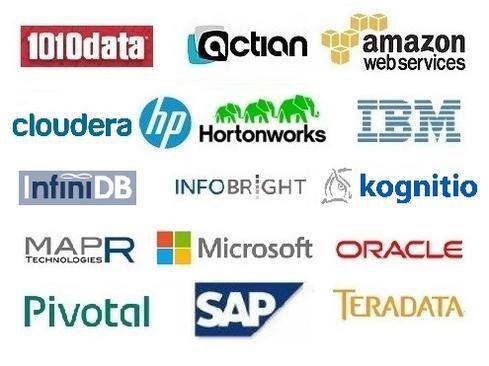
Leveraging Analytics Platforms for Insight-Driven Decisions
In today’s fast-paced digital landscape, making smart, data-driven decisions is essential for agencies aiming to thrive and boost recurring revenue. Leveraging advanced analytics platforms can bring a wealth of insights that transform raw data into actionable strategies. By adopting these tools, agencies can not only enhance their operational efficiency but also provide tailored services that resonate with their clients.
To maximize the effectiveness of analytics platforms, consider integrating them with the following smart models:
- Customer Segmentation: Use analytics to identify different segments within your target audience. This allows for personalized marketing strategies, tailored content, and more effective engagement.
- Predictive Analytics: Implement models that forecast future trends based on historical data. This helps in anticipating client needs and adjusting your offerings accordingly.
- Performance Tracking: Regularly track key performance indicators (KPIs) to evaluate the success of campaigns and make necessary adjustments in real-time.
Consider the following table to illustrate how different analytics tools can align with specific agency goals:
| Analytics Tool | Agency Goal | Key Features |
|---|---|---|
| Google Analytics | Website Performance | Traffic tracking, user behavior analysis, conversion tracking |
| HubSpot | Inbound Marketing | Email automation, social media tracking, lead nurturing |
| Tableau | Data Visualization | Interactive dashboards, real-time data analysis, customizable reports |
Incorporating these analytics platforms into your operational framework not only enhances decision-making but also fosters a culture of accountability and transparency within your agency. With the right tools, you can easily monitor ongoing projects and client satisfaction, enabling you to pivot quickly when challenges arise.
Furthermore, analytics can reveal new revenue streams by identifying underutilized capabilities or emerging market trends. By regularly analyzing client feedback and campaign performance, you can uncover opportunities for upselling or cross-selling services that align with client objectives.
Don’t forget to cultivate a data-driven mindset within your team. Encourage collaboration between departments and share insights gleaned from analytics tools. This collective approach ensures everyone is aligned and working towards the same goals, ultimately leading to improved client relationships and increased recurring revenue.
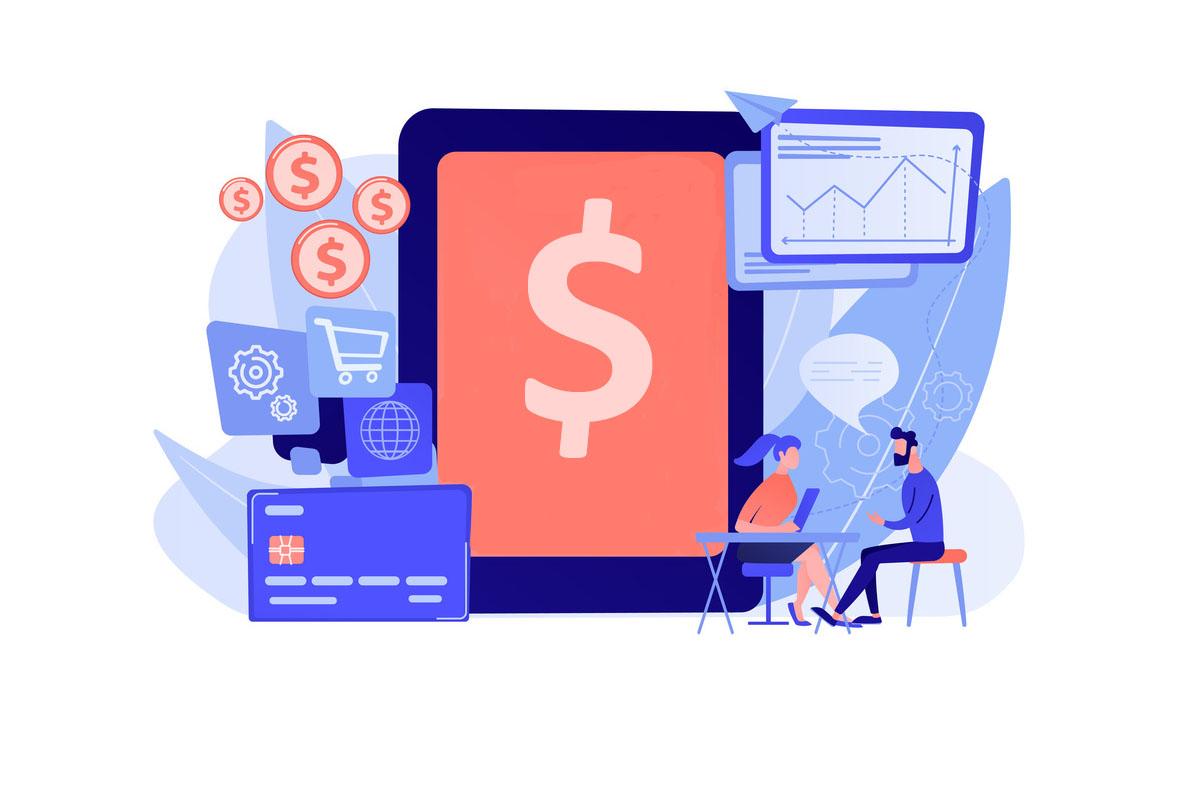
Integrating Billing Solutions to Simplify Payment Processes
In today’s fast-paced digital landscape, managing payments efficiently is crucial for agencies looking to scale their recurring revenue. Integrating robust billing solutions can not only streamline your payment processes but also enhance the overall client experience. By automating invoicing and payment collection, agencies can free up valuable time and reduce the risk of errors that may occur with manual processes.
Here are a few key benefits of integrating billing solutions:
- Automated Invoicing: Say goodbye to the tedious task of creating invoices manually. Automated invoicing ensures that clients receive their bills on time, every time, fostering trust and reliability.
- Flexible Payment Options: Clients appreciate having choices. Modern billing solutions offer various payment methods, including credit cards, bank transfers, and digital wallets, making it easier for clients to pay promptly.
- Real-Time Reporting: Keep track of your agency’s financial health with real-time analytics. Integrated solutions provide insights into cash flow, outstanding invoices, and payment trends, enabling informed decision-making.
- Improved Cash Flow: With recurring billing, agencies can predict revenue more accurately, allowing for better financial planning and resource allocation.
Choosing the right billing solution is essential for maximizing these benefits. Look for features that align with your agency’s unique needs, such as:
- Recurring Billing: Ideal for subscription-based services, this feature automates the billing cycle and removes the hassle of manual renewals.
- Client Portal: A self-service portal allows clients to manage their payments, view invoices, and update information, reducing the administrative burden on your team.
- Integration Capabilities: The best billing solutions seamlessly integrate with your existing tech stack, whether it’s CRM, project management, or accounting software.
To illustrate the impact of billing solutions, consider this comparison table highlighting a few popular tools:
| Tool | Key Features | Best For |
|---|---|---|
| Stripe | Recurring billing, subscription management, global payments | Agencies with flexible payment needs |
| Square | Point of sale, online payments, invoicing | Agencies with physical locations |
| FreshBooks | Invoicing, expense tracking, reporting | Freelancers and small agencies |
| Chargebee | Subscription management, advanced analytics, billing automation | Businesses with complex billing needs |
Incorporating these tools into your operations can lead to increased productivity, better cash flow management, and ultimately, higher recurring revenue. As you explore options, consider how each solution can be tailored to fit your agency’s specific requirements. The right tool not only simplifies payment processes but also empowers you to focus on what you do best: delivering exceptional services to your clients.
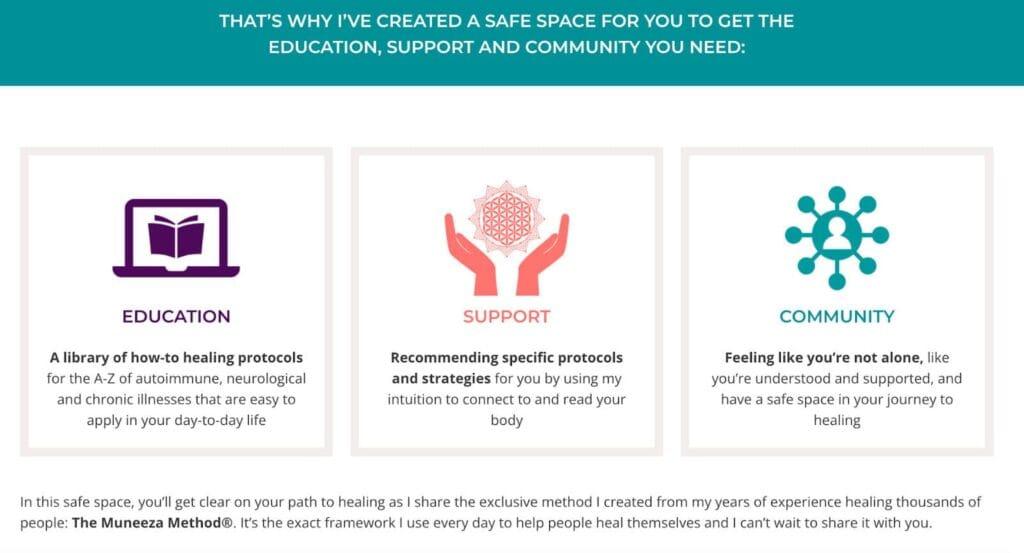
Creating Membership Models to Foster Client Loyalty
When it comes to fostering long-term client loyalty, creating well-thought-out membership models can be a game-changer for your agency. These models not only ensure a steady stream of recurring revenue but also deepen the relationship between your agency and its clients. By providing exclusive benefits and tailored services, you can transform one-time customers into loyal members who feel valued and engaged.
1. Tiered Membership Levels
Implementing tiered membership levels allows clients to choose the level of service that aligns with their needs and budget. By offering different tiers, you can cater to a variety of clients while incentivizing them to upgrade for additional benefits. Consider including perks such as:
- Priority support
- Exclusive access to new features
- Discounted rates on add-on services
2. Community Engagement
Building a community around your membership program can significantly enhance client loyalty. Creating forums, hosting webinars, or offering exclusive events can make your members feel part of something bigger. This not only fosters connections among clients but also creates a valuable feedback loop, allowing you to refine your offerings based on real user input.
3. Educational Resources
Clients are more likely to remain loyal when they feel they are continuously learning and growing. Offering exclusive access to tutorials, e-books, or industry insights can help position your agency as a trusted authority. This commitment to client education can differentiate your services and promote a culture of loyalty.
4. Personalized Experiences
Personalization is key in today’s market. Use data analytics to understand your clients’ preferences and needs, allowing you to tailor their membership experience. For example, you could send customized content recommendations or personalized offers based on their previous interactions with your agency. This level of attention can significantly enhance client satisfaction and loyalty.
5. Regular Feedback Loops
Establishing regular feedback loops can keep your membership model aligned with client expectations. Sending out satisfaction surveys or having one-on-one check-ins can provide valuable insights into how your clients feel about the services they’re receiving. By acting on this feedback, you show clients that their opinions matter, reinforcing their loyalty.
| Membership Model | Key Benefits | Client Engagement Strategies |
|---|---|---|
| Tiered Membership | Flexibility, Customization | Exclusive offers, Discounts |
| Community-Based | Networking, Support | Forums, Webinars |
| Resource-Driven | Knowledge, Authority | Workshops, eBooks |
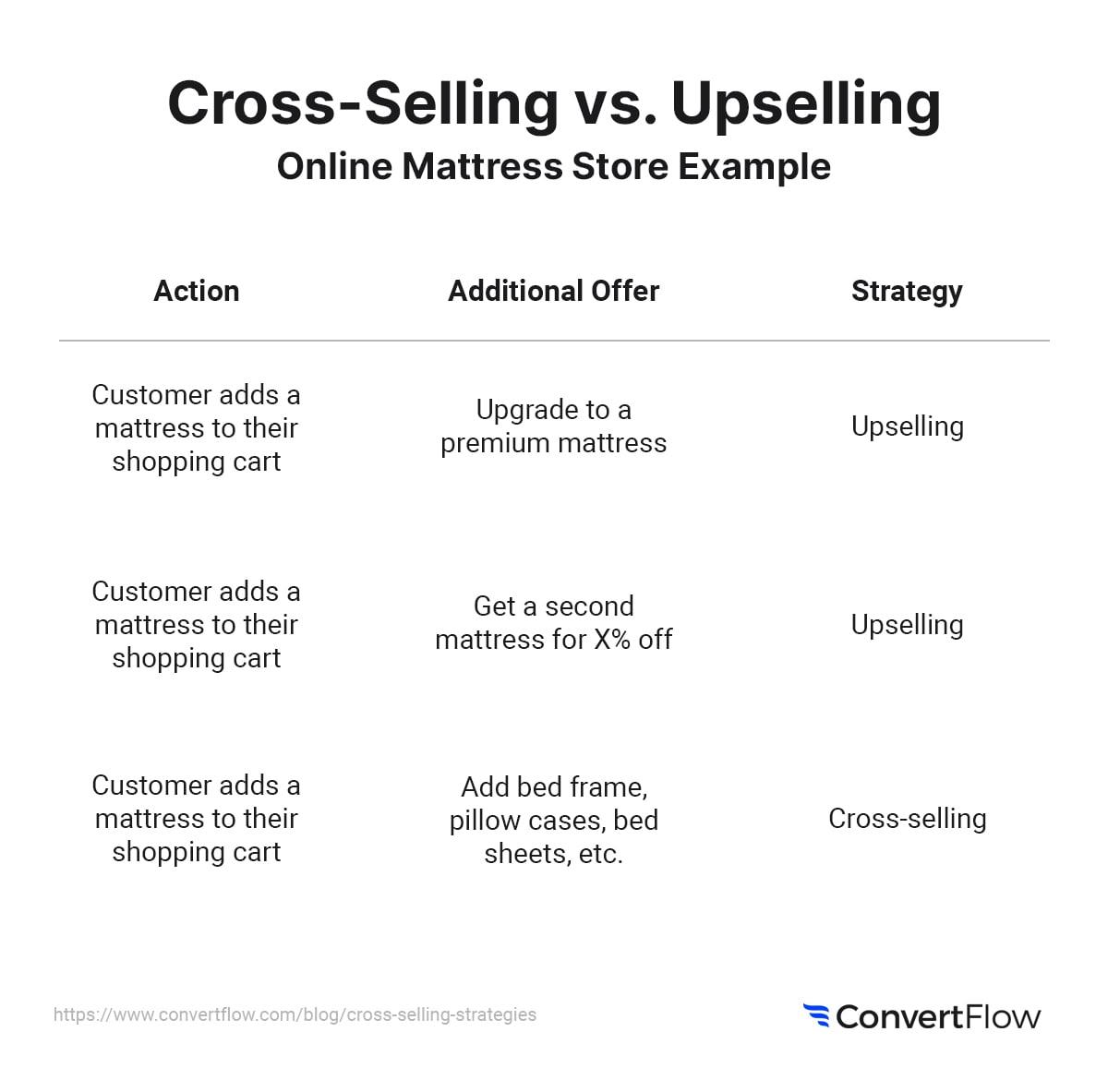
Upselling and Cross-Selling: Tools to Enhance Client Value
Upselling and cross-selling are two powerful strategies that can significantly enhance the value you provide to your clients while simultaneously boosting your agency’s recurring revenue. By leveraging the right tools, you can effectively implement these strategies and turn one-time customers into loyal, long-term clients who are eager to invest more in your services.
Customer Relationship Management (CRM) systems are essential for managing client interactions and understanding their needs. A robust CRM like HubSpot or Salesforce can help you track client behavior and identify opportunities for upselling or cross-selling. By analyzing purchase history and customer preferences, you can tailor your offerings to meet their evolving needs, ensuring that your proposals resonate.
Email Marketing platforms, such as Mailchimp or ActiveCampaign, can be leveraged to create targeted campaigns that promote additional services or upgrades. By segmenting your audience based on their previous engagements or interests, you can craft personalized messages that highlight the benefits of your premium offerings, making it easier for clients to see the value in what you’re proposing.
Analytics Tools, including Google Analytics and Hotjar, provide valuable insights into how clients interact with your services. By analyzing user behavior on your website or within your service platform, you can pinpoint areas where clients may need additional support or are likely to benefit from complementary services. This data-driven approach allows you to make more informed decisions about which upsell or cross-sell opportunities to pursue.
Chatbots and AI Assistants are becoming increasingly popular for engaging clients in real time. Tools like Drift or Intercom can help you initiate conversations that guide clients toward relevant upgrades or additional features. By using conversational AI to answer questions and recommend products dynamically, you can enhance the customer experience while driving revenue growth.
Implementing a Subscription Management Tool can also streamline your upselling and cross-selling efforts. Platforms like Chargebee or Recurly not only simplify billing processes but also allow you to offer tiered service levels or add-ons seamlessly. This ensures that clients can easily understand their options and upgrade their services without friction, ultimately increasing your agency’s monthly recurring revenue.
consider utilizing Customer Feedback Tools such as SurveyMonkey or Typeform to gather insights directly from your clients. Understanding their pain points and desires can help you create tailored upsell and cross-sell offers that truly resonate. When clients feel heard and recognized, they are much more likely to invest in additional services that address their specific needs.
| Tool | Primary Function | Key Benefit |
|---|---|---|
| HubSpot | CRM | Personalized client insights |
| Mailchimp | Email Marketing | Targeted campaigns |
| Google Analytics | Analytics | User behavior insights |
| Drift | Chatbot | Real-time engagement |
| Chargebee | Subscription Management | Seamless upselling |
| SurveyMonkey | Feedback | Client needs assessment |
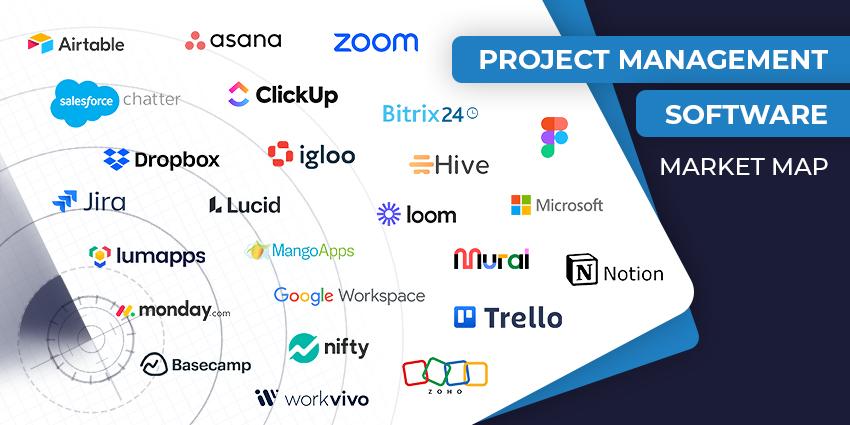
Utilizing Project Management Software for Efficiency Gains
In today’s fast-paced digital landscape, agencies are consistently challenged to enhance productivity while maintaining superior service quality. One effective way to achieve this is through the implementation of project management software. By streamlining processes and facilitating communication, these tools can lead to significant efficiency gains.
Imagine having a centralized platform where your team can collaborate seamlessly, track project progress, and manage resources effectively. This not only minimizes confusion but also fosters accountability. Here are some of the standout features that can contribute to improving your agency’s operations:
- Task Management: Assign tasks, set deadlines, and track progress all in one place.
- Time Tracking: Monitor how much time is spent on different projects, helping to identify areas for improvement.
- Reporting Tools: Generate insightful reports to analyze project performance and resource allocation.
- Collaboration Features: Facilitate real-time communication and file sharing among team members.
To maximize the benefits of project management software, agencies should consider adopting specific models that align with their operational goals. For instance, the Agile methodology is perfect for teams that require flexibility and quick iterations. Here’s how it can be integrated:
| Agile Methodology Steps | Project Management Tool Features |
|---|---|
| 1. Iterative Development | Use sprints to deliver small, functional components of a project. |
| 2. Daily Stand-Ups | Utilize chat features for regular check-ins without lengthy meetings. |
| 3. Feedback Loops | Incorporate client feedback directly into the tool for immediate adjustments. |
Another model to consider is the Waterfall approach, which may suit agencies with fixed project scopes. This linear process allows for thorough planning and execution. Here’s how project management software can support this method:
- Clear Milestones: Set distinct phases for completion with corresponding deliverables.
- Resource Allocation: Assign resources effectively to ensure each stage has the necessary support.
- Documentation: Keep all project documents organized and accessible for reference throughout the lifecycle.
Integrating project management software not only enhances internal workflows but can also improve client relationships. With transparent processes and real-time updates, clients feel more engaged and informed about their projects. This level of visibility can significantly boost trust and satisfaction, leading to higher retention rates and increased recurring revenue.
By embracing these tools and approaches, agencies can not only streamline operations but also create a more dynamic work environment that encourages collaboration and innovation. The result? A more efficient team, happier clients, and ultimately, greater profitability.

Crafting Service Packages That Keep Clients Coming Back
Creating service packages that resonate with clients is a fundamental strategy for generating sustained revenue. When done right, these packages not only solve problems but also encourage ongoing relationships, leading to repeat business. Here are some key elements to consider when designing your offerings:
- Understand Client Needs: Conduct thorough research to identify the challenges your clients face. Tailor your services to address these specific pain points, ensuring they see the value in a long-term partnership.
- Tiered Service Levels: Offer multiple tiers of service packages, from basic to premium. This allows clients to choose the level of support that best suits their needs and budget, while also providing upsell opportunities.
- Incorporate Flexibility: Design packages that allow clients to mix and match services. Flexibility fosters a sense of ownership and customization, making clients feel more invested in their choices.
- Clear Value Proposition: Each package should clearly outline the benefits and outcomes. Use compelling language that speaks directly to the client’s goals, highlighting how your services will help them succeed.
Moreover, consider adding additional features that enhance client engagement:
| Feature | Description |
|---|---|
| Regular Check-Ins | Schedule monthly or quarterly reviews to discuss progress and adjust strategies as needed. |
| Exclusive Resources | Provide clients with access to exclusive tools, templates, or educational content that adds value. |
| Referral Incentives | Encourage existing clients to refer new clients by offering discounts or rewards for successful referrals. |
Lastly, communication is key. Regularly engage with clients to gather feedback and iterate on your service packages. This not only improves your offerings but also strengthens the client relationship, making them feel valued. Implementing these strategies will not only enhance client satisfaction but will also set the stage for sustained recurring revenue.

Building Stronger Client Relationships with Feedback Tools
In today’s competitive landscape, understanding client needs and preferences is more crucial than ever. Utilizing feedback tools can be a game-changer in solidifying those relationships. By actively seeking and incorporating client feedback, agencies not only enhance their service offerings but also foster a deeper sense of loyalty and trust.
Here are some effective ways feedback tools can help you build stronger connections:
- Personalized Communication: Feedback tools allow you to gather specific insights about your clients’ experiences. This enables you to tailor your communications and services to meet their evolving needs, making them feel valued and understood.
- Proactive Problem Solving: When you actively seek feedback, you can identify potential issues before they escalate. Addressing concerns quickly demonstrates your commitment to client satisfaction and enhances their overall experience.
- Data-Driven Decisions: Utilizing feedback tools provides you with concrete data that can guide your strategic decisions. This ensures that your agency is adapting to client needs and market trends, ultimately driving growth.
- Encouraging Client Engagement: When clients see that their opinions matter, they are more likely to engage deeply with your agency. This can lead to more referrals and long-term partnerships, boosting your recurring revenue.
To maximize the effectiveness of feedback tools, consider implementing them through various stages of the client journey:
| Client Journey Stage | Feedback Tool | Purpose |
|---|---|---|
| Onboarding | Surveys | Gather initial impressions and expectations |
| Engagement | Regular Check-ins | Ensure satisfaction and address concerns |
| Project Completion | Post-Project Surveys | Evaluate overall experience and gather testimonials |
Incorporating tools such as Net Promoter Score (NPS) surveys, customer satisfaction (CSAT) surveys, and even social media polls can provide valuable insights into how clients perceive your services. Each tool offers unique benefits, so it’s essential to choose the right ones that align with your agency’s goals.
When clients feel heard and see that their feedback leads to tangible changes, they are more likely to stay loyal to your agency. Remember, building stronger client relationships is not just about delivering excellent service; it’s about creating an open channel for communication and demonstrating that you genuinely care about their success.

Case Studies: Agencies Thriving with Recurring Revenue Models
Imagine transforming your agency from a one-time project shop into a powerhouse of predictable income. Here are some inspiring case studies of agencies that have successfully embraced recurring revenue models, showcasing the tools that have propelled their growth.
Agency A: The Website Maintenance Wizards
Agency A specializes in website design and maintenance. By leveraging a subscription-based model, they offer clients ongoing maintenance packages that include:
- Regular updates to website content
- Monthly SEO audits to enhance visibility
- 24/7 support for any technical issues
Using a project management tool like Asana, they streamline their tasks and ensure timely delivery, making clients feel valued and engaged.
Agency B: Marketing with a Monthly Touch
This digital marketing agency has implemented a tiered subscription service that offers various levels of marketing services. By employing tools like HubSpot for automation and CRM, they’ve seen a 75% increase in client retention rates. Their service tiers include:
- Basic: Monthly newsletters and social media posting
- Pro: Targeted ad campaigns and analytics reporting
- Premium: Comprehensive marketing strategy and weekly consultations
Agency C: Creative Content on Repeat
Agency C has transformed content creation into a subscription-based model by using tools like Contentful. They provide clients with a steady stream of blog posts, video content, and social media graphics. Their success stems from:
- Customized content calendars that align with client goals
- Consistent engagement through regular feedback loops
- Analytics tracking to measure impact and adjust strategies
Comparative Tools for Recurring Revenue Success
| Tool | Description | Best For |
|---|---|---|
| Asana | Task management and project tracking | Agencies needing organization |
| HubSpot | CRM and marketing automation | Agencies focusing on client relationships |
| Contentful | Content management system | Agencies creating consistent content |
These agencies demonstrate that by integrating the right tools and adopting smart recurring revenue models, you can create a sustainable business that not only meets client needs but also fosters long-term relationships. Each case study serves as a blueprint for how to effectively transition to a model that consistently generates income and allows for scalable growth.

Final Thoughts on Choosing the Right Tools for Sustainable Growth
When it comes to achieving sustainable growth for your agency, the right tools can make all the difference. Selecting the appropriate technologies not only enhances operational efficiency but also positions your agency to capitalize on predictable revenue streams. Here are some pivotal considerations to keep in mind while choosing your toolkit:
- Align with Your Agency Goals: Ensure that the tools you select directly support your agency’s long-term objectives. Whether you’re focusing on client retention or increasing lead conversion rates, your tools should facilitate these goals.
- User Experience is Key: A tool that is cumbersome to use can hinder productivity. Opt for platforms that are intuitive and provide a seamless experience for both your team and your clients.
- Scalability Matters: As your agency grows, the tools you use must grow with you. Choose solutions that can adapt to increased workloads and added functionalities without losing efficiency.
Additionally, integrating these tools effectively can amplify their benefits. Consider the following strategies for optimal implementation:
- Cross-Tool Integration: Choose tools that easily integrate with one another. This ensures a smooth flow of data and reduces the risk of information silos.
- Regular Training: Invest in regular training sessions for your team to ensure they are fully equipped to utilize the tools to their fullest potential.
- Feedback Mechanism: Establish a feedback loop with your team to continuously assess the effectiveness of the tools and make adjustments as necessary.
Lastly, it’s essential to measure the impact of the tools on your recurring revenue streams. Implement a system to track key performance indicators (KPIs) that reflect the success of your chosen tools. Here’s a simple table to illustrate significant KPIs to monitor:
| KPI | Description |
|---|---|
| Client Retention Rate | Measures the percentage of clients that continue to do business with your agency over a specified period. |
| Monthly Recurring Revenue (MRR) | Tracks the predictable revenue generated from subscriptions on a monthly basis. |
| Customer Lifetime Value (CLV) | The total revenue your agency can expect from a single client account throughout the business relationship. |
the right combination of tools not only enhances your agency’s operational capabilities but also fosters an environment conducive to sustainable growth. By carefully selecting and effectively implementing these tools, your agency can unlock new avenues for recurring revenue, ensuring a prosperous future.
Frequently Asked Questions (FAQ)
Q&A: 6 Tools to Boost Agency Recurring Revenue (and the Smartest Models to Use Them With)
Q: Why should agencies focus on recurring revenue?
A: Great question! Recurring revenue is like the holy grail for agencies. It provides stability and predictability, which can help you plan for growth. Instead of chasing new clients every month, you have a steady stream of income that allows you to invest in your team and services, ultimately leading to better client relationships and higher satisfaction.
Q: What are some tools that can help agencies generate recurring revenue?
A: There are several fantastic tools out there! Here are six that stand out:
- Subscription Management Platforms: Tools like Chargebee or Recurly help automate billing and invoicing for subscription services.
- Project Management Software: Platforms like Asana or Trello are invaluable for keeping projects organized, ensuring you meet your ongoing commitments to clients.
- CRM Systems: Tools like HubSpot or Salesforce can help you manage client relationships and identify upsell opportunities.
- Email Automation Tools: Services like Mailchimp or ActiveCampaign allow you to automate communications with clients, keeping them engaged and informed about your services.
- Payment Processors: Stripe and PayPal make it easy to accept recurring payments and manage subscriptions seamlessly.
- Analytics Tools: Google Analytics or Mixpanel can provide insights into customer behavior, helping you refine your offerings and retain clients.
Q: How do I choose the best models to implement these tools?
A: It’s all about understanding your audience! Start by identifying which services can be offered on a subscription basis, then select tools that align with those offerings. For instance, if you provide digital marketing services, you might create a monthly package that includes ongoing SEO and content updates.
Q: Can you give an example of a successful recurring revenue model?
A: Absolutely! Take a digital marketing agency that introduces a monthly retainer model. They could offer clients a comprehensive package that includes social media management, SEO, and monthly reporting. By using tools like a CRM to track client interactions and analytics tools to measure campaign success, they can demonstrate value, leading to long-term contracts and happy clients.
Q: What’s the biggest mistake agencies make when trying to implement recurring revenue?
A: One major mistake is underestimating the importance of communication. Agencies often dive into offering subscriptions without clearly articulating the value to clients. It’s crucial to set expectations upfront and maintain consistent communication about progress, results, and changes in the service. This builds trust and ensures clients see the value in their investment.
Q: Do you have any final tips for agencies looking to boost their recurring revenue?
A: Definitely! Start small by piloting a subscription service with a few loyal clients. Gather feedback and fine-tune your offerings based on their experiences. Also, don’t forget to regularly assess your tools and models. The market and technology are always evolving, so staying adaptable is key. And remember, consistency is crucial—your clients should feel like they’re getting ongoing value from your services every single month!
Q: Where can I learn more about these tools and models?
A: Great question! There are plenty of resources online. Consider following industry blogs, attending webinars, or joining agency-focused communities on platforms like LinkedIn. Networking with other agency owners can also provide invaluable insights and help you discover new strategies that work for them. Plus, keep an eye on industry trends—staying informed will help you continually enhance your offerings!
To Wrap It Up
As we wrap up our exploration of the six powerful tools to boost your agency’s recurring revenue, let’s take a moment to reflect on the incredible opportunities that lie ahead. Implementing these tools isn’t just about adding another service to your portfolio; it’s about transforming the way you do business. By embracing the right models, you can create lasting relationships with your clients, ensuring steady income while delivering real value.
Remember, the key to success is not just in the tools themselves but in how you choose to leverage them. Whether you opt for subscription-based services, retainers, or performance-based models, the right approach can set you apart from the competition. So, take a step back and evaluate your current offerings. Are there gaps you can fill or service enhancements that could elevate your client experience?
Now is the time to innovate and adapt. By integrating these tools into your agency’s DNA, you can create a sustainable revenue stream that not only supports your business goals but also fosters a loyal client base.
So, what are you waiting for? Dive in, explore these tools, and start crafting a recurring revenue model that works for you. Your agency’s future is bright, and with the right strategies in place, you’ll be well on your way to achieving the financial freedom and growth you’ve always envisioned. Here’s to your success!



